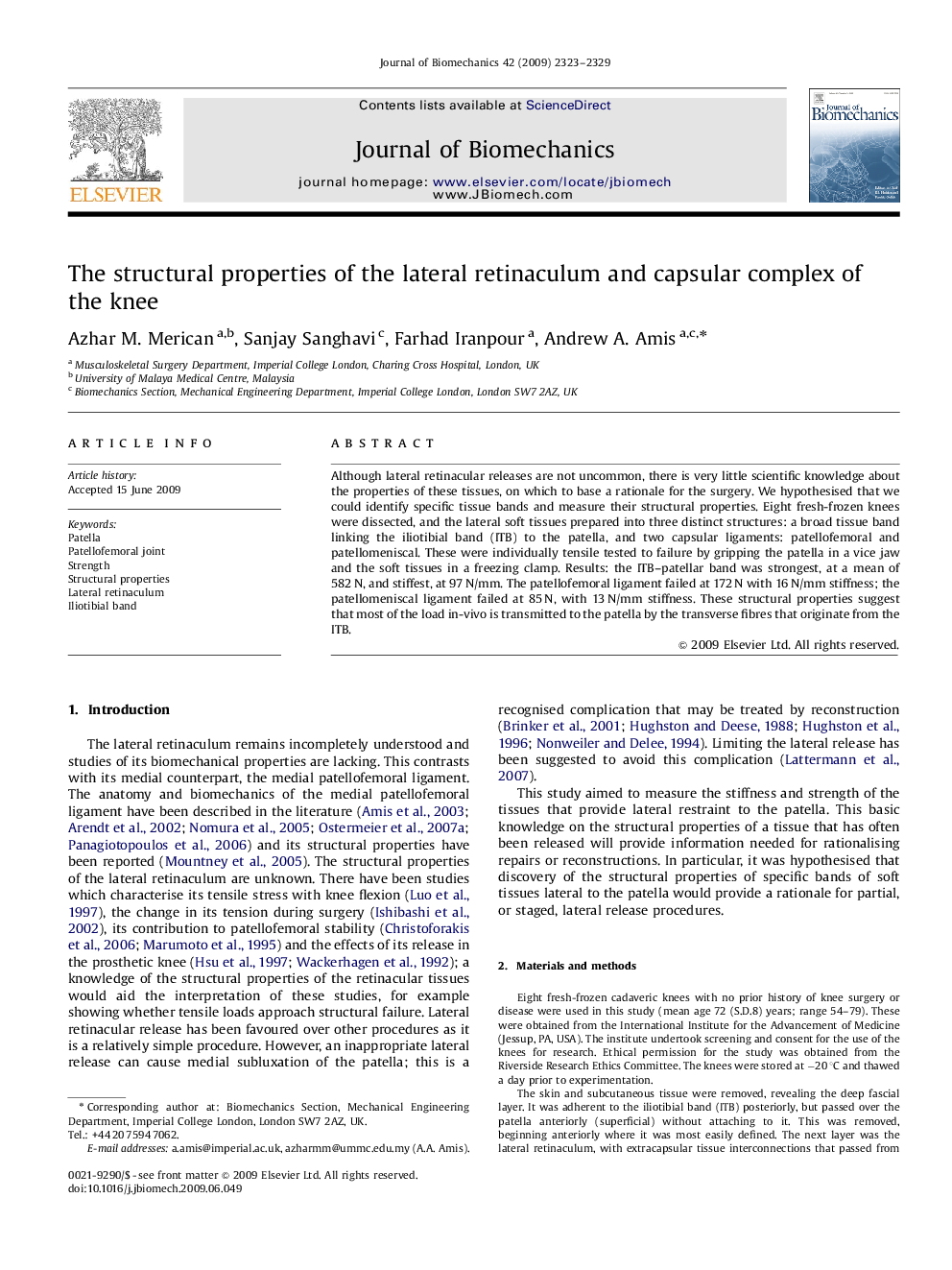| Article ID | Journal | Published Year | Pages | File Type |
|---|---|---|---|---|
| 10433529 | Journal of Biomechanics | 2009 | 7 Pages |
Abstract
Although lateral retinacular releases are not uncommon, there is very little scientific knowledge about the properties of these tissues, on which to base a rationale for the surgery. We hypothesised that we could identify specific tissue bands and measure their structural properties. Eight fresh-frozen knees were dissected, and the lateral soft tissues prepared into three distinct structures: a broad tissue band linking the iliotibial band (ITB) to the patella, and two capsular ligaments: patellofemoral and patellomeniscal. These were individually tensile tested to failure by gripping the patella in a vice jaw and the soft tissues in a freezing clamp. Results: the ITB-patellar band was strongest, at a mean of 582Â N, and stiffest, at 97Â N/mm. The patellofemoral ligament failed at 172Â N with 16Â N/mm stiffness; the patellomeniscal ligament failed at 85Â N, with 13Â N/mm stiffness. These structural properties suggest that most of the load in-vivo is transmitted to the patella by the transverse fibres that originate from the ITB.
Related Topics
Physical Sciences and Engineering
Engineering
Biomedical Engineering
Authors
Azhar M. Merican, Sanjay Sanghavi, Farhad Iranpour, Andrew A. Amis,
